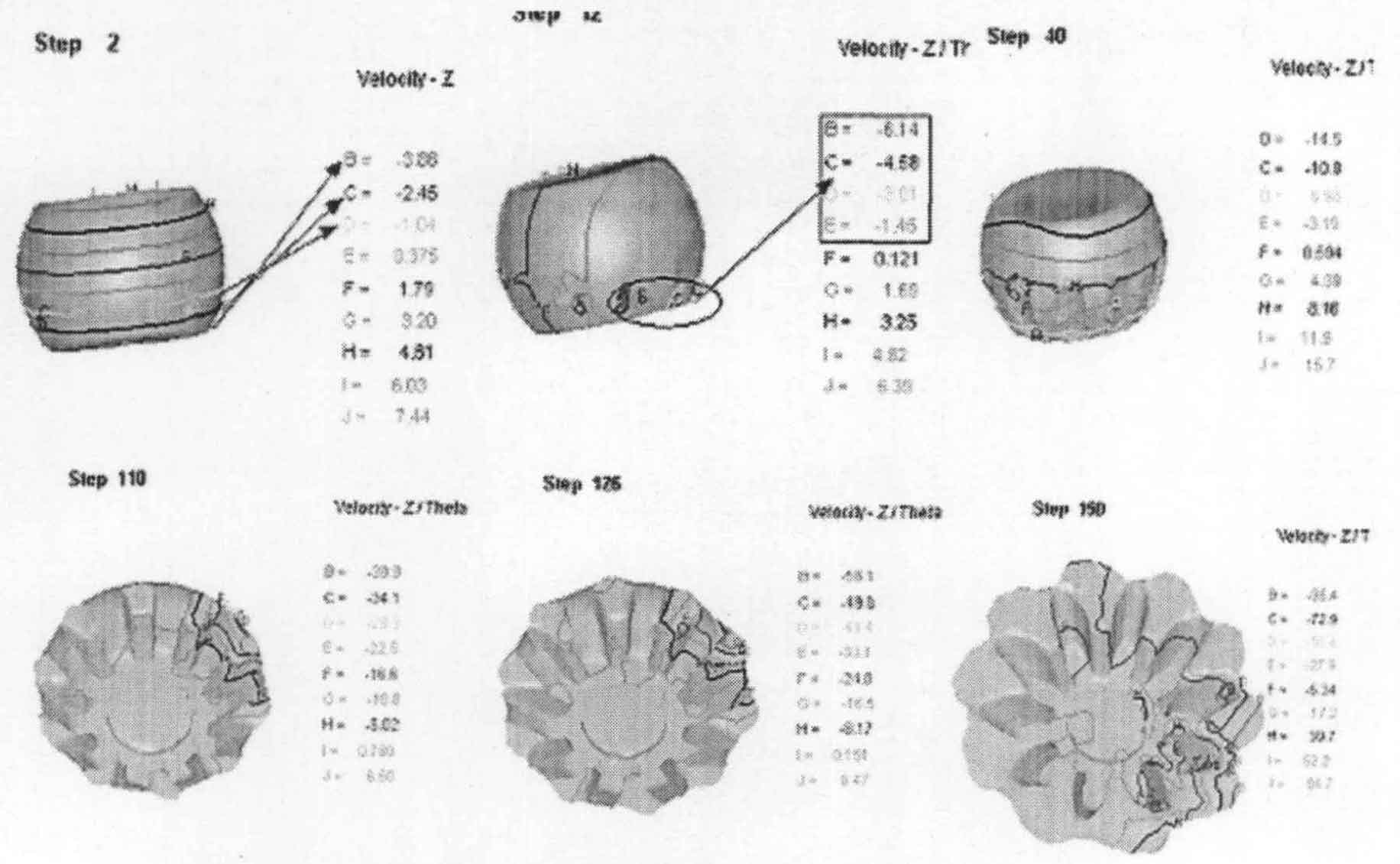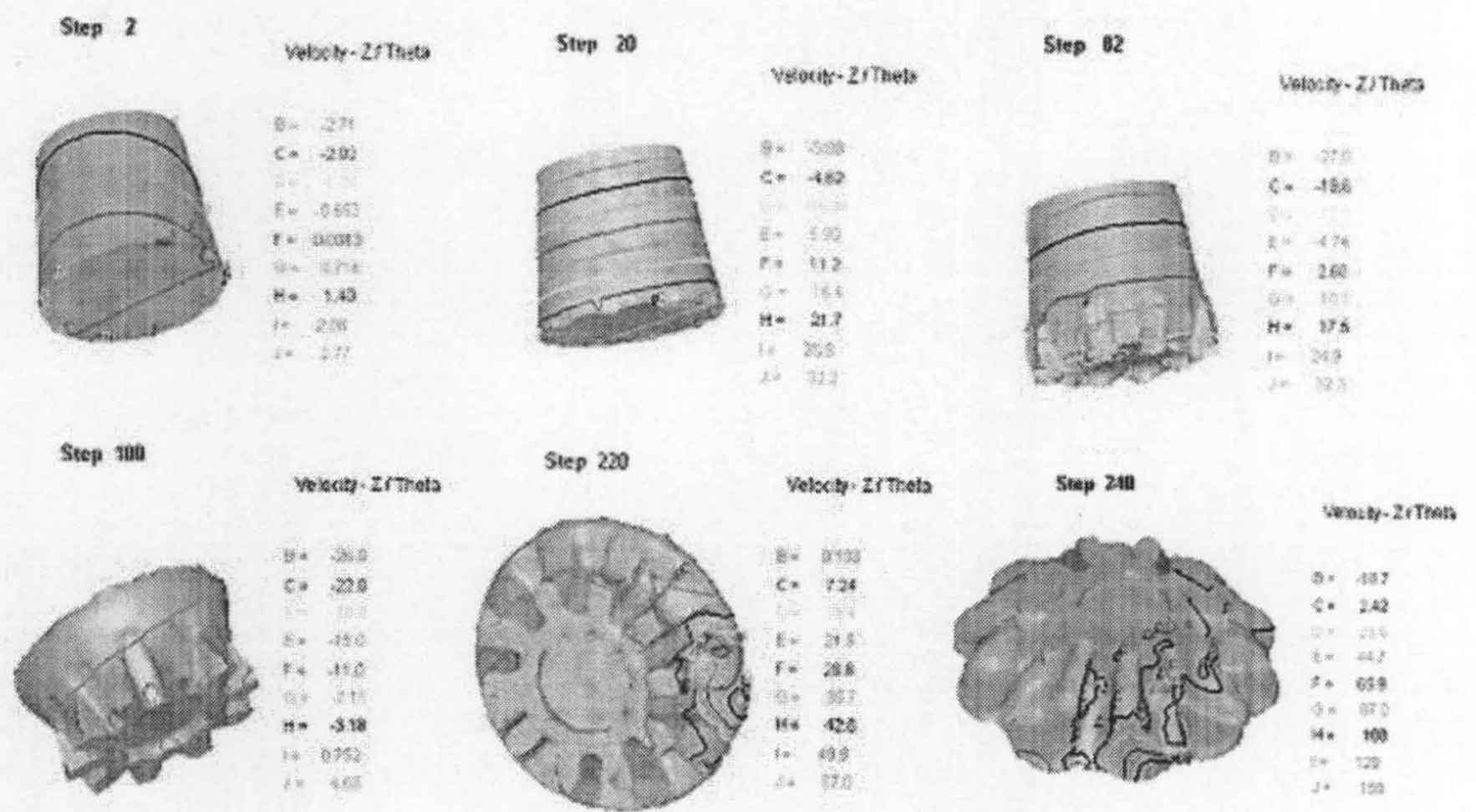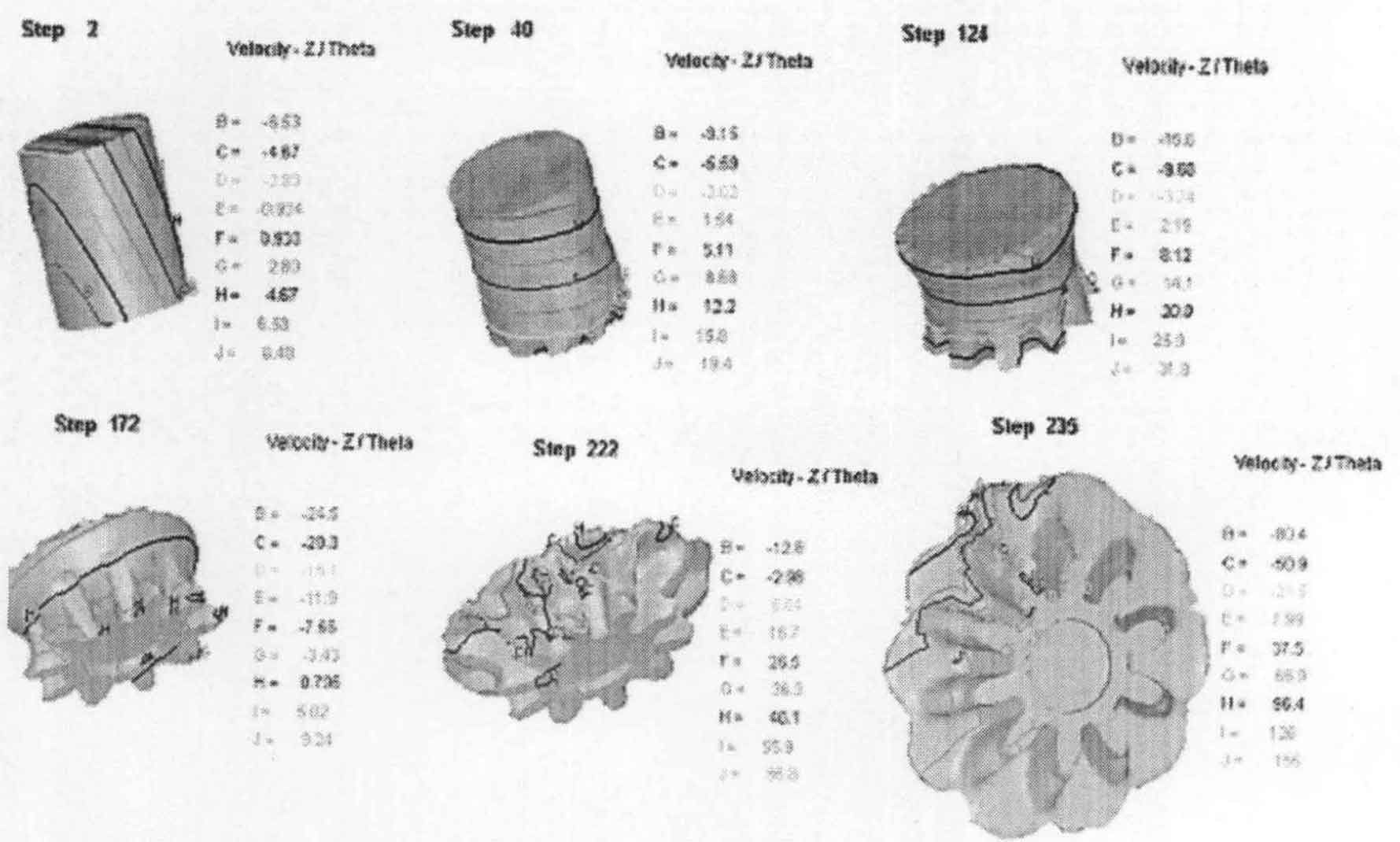Figure 1 intuitively reflects the forming conditions of blanks with different shapes. Figure 2 shows the upward forming speed distribution of three straight bevel gear blanks when the upper die swings to a certain position. Figure 2 shows the process of gradual change of the shape of spur bevel gear forging with the process of rotary forging. With the increase of reduction, the metal flow becomes more intense, and the tooth shape is filled and even formed; At the same time, the flow resistance is increasing, which shows that the deformation force is increasing, which can be seen from the rolling pressure stroke simulation curve (Fig. 3).
From Fig. 2 to Fig. 4, it can be seen that the radial deformation speed of the three straight bevel gear blanks is basically the same in the initial stage of forming, and they all show overall deformation, and the deformation speed of the surface layer is slightly higher than that of the inside, indicating that the three straight bevel gear blanks show axial compression deformation in the initial stage of forming. With the decrease of the height and the increase of the contact area between the blank surface and the cavity surface, the tooth profile begins to form. At the same time, it can be seen that since the contour line of the drum blank is consistent with the contour line of the cavity surface, the straight bevel gear blank ends the free pier coarsening stage earlier, the straight bevel gear blank adheres to the mold wall, and the filling of the whole tooth profile is well synchronized. The cylindrical and conical blank contact the lower end first to form the tooth profile, the lower end tooth profile filling is faster, and then the upper end tooth profile begins to fill, and the forming speed of the upper and lower ends is faster than that of the middle, When the tooth profile has not been well filled, the upper and lower dies have been in contact, resulting in the defect of “lack of meat” in the middle of the tooth profile.
From the comparison of forming speed from Fig. 2 to Fig. 4, we know that the key reason for the “lack of meat” in the middle of conical and cylindrical final forming is that in the middle of forming, the forming speed line is basically distributed in the middle, with velocity I = 0.789. A positive number indicates that the material in the middle is extruded outward, which is conducive to the filling of the middle of spur bevel gear; In step 100 shown in Fig. 3 and step 172 shown in Fig. 4, the forming speed line deviates from the middle part, so the middle tooth shape cannot be filled when filling.




